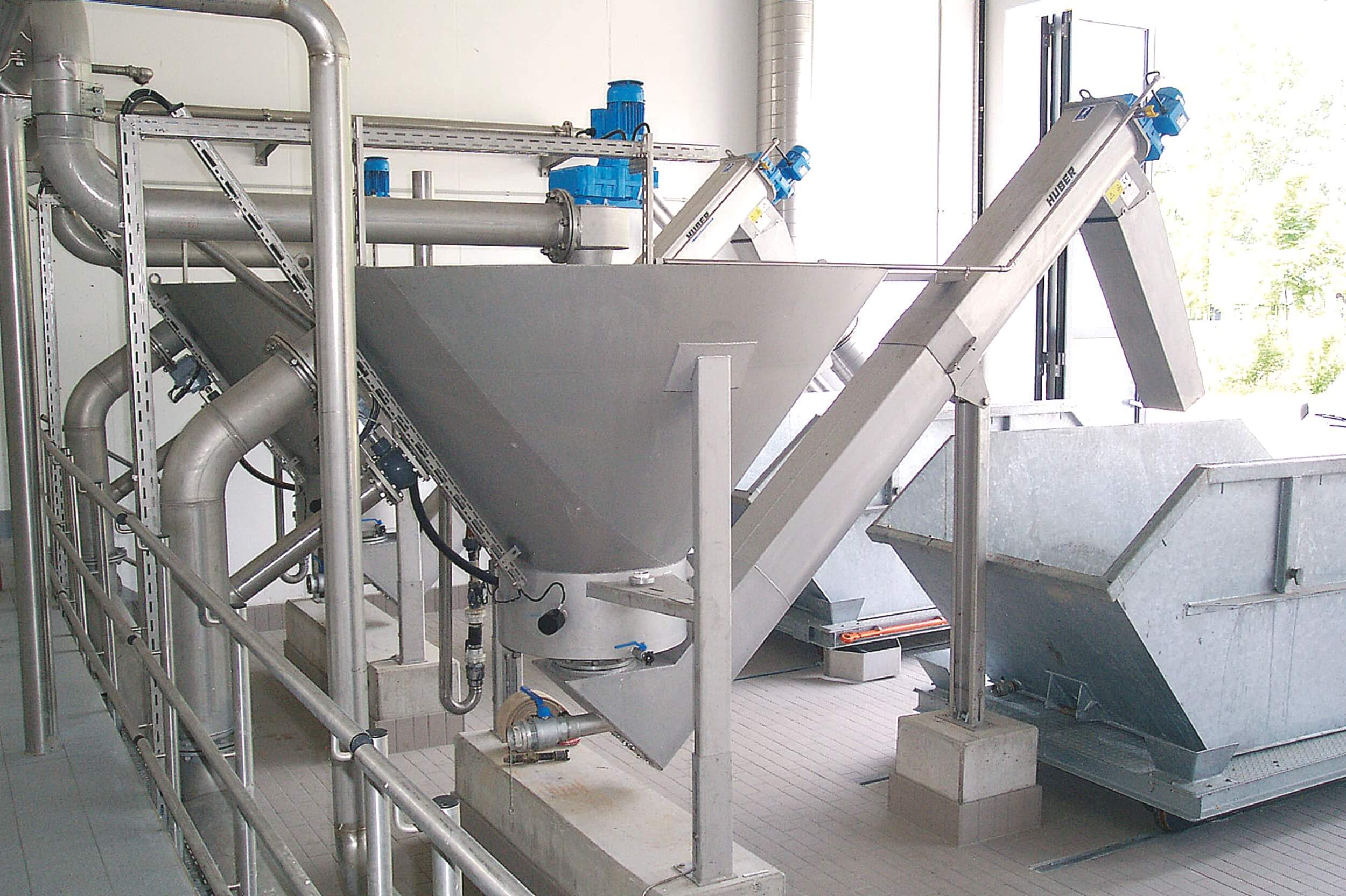HUBER has solutions for the processing of sewer grit and grit from sewage treatment plants as well as road sweepings. Depending on the quantities and composition of the material to be processed as well as other general conditions, we design a tailor-made HUBER solution for grit treatment.
Treatment of Grit from Sewage Treatment Plants
Process
The Target of Grit Treatment
Due to the proportion of organic substances, the heterogeneous grit-organic mixture has a relatively low dry residue of 40 – 70 % DR and a relatively high loss on ignition of up to 80 %.
The purpose of a well-performing grit treatment system is to first remove the grit down to a grain size of 0.20 mm and then to separate the valuable material sand and the mineral fraction from the organic contaminants mentioned.
The treatment of grit produces a valuable resource with a low loss on ignition (< 3 %) and a high dry residue (> 90 %). This reduces disposal costs and provides a product that can be reused as a secondary raw material.
Products
Machines for Treatment of Grit from Sewage Treatment Plants
Media
Videos and Animations
Downloads
Customer Information and Documents
FAQ















